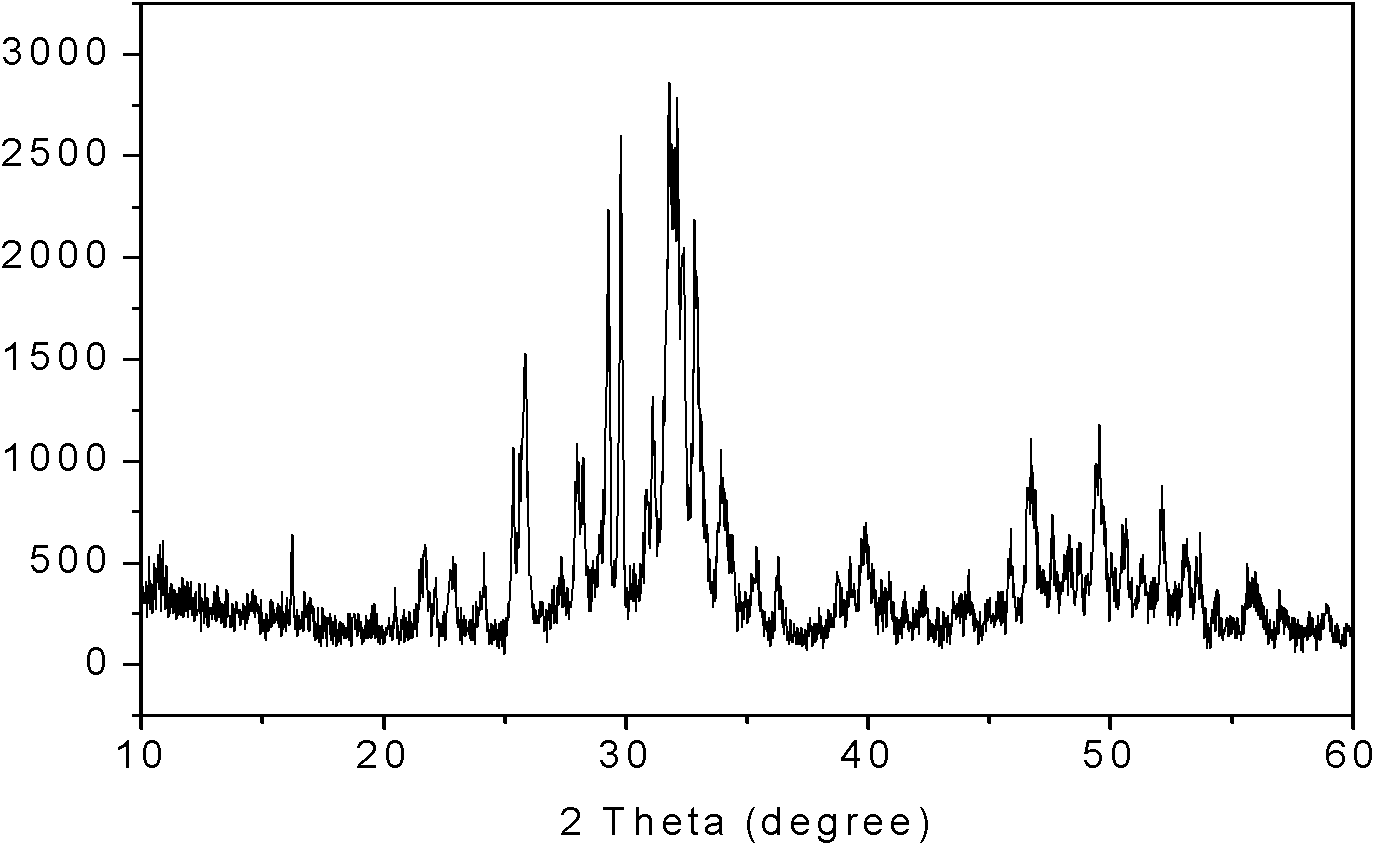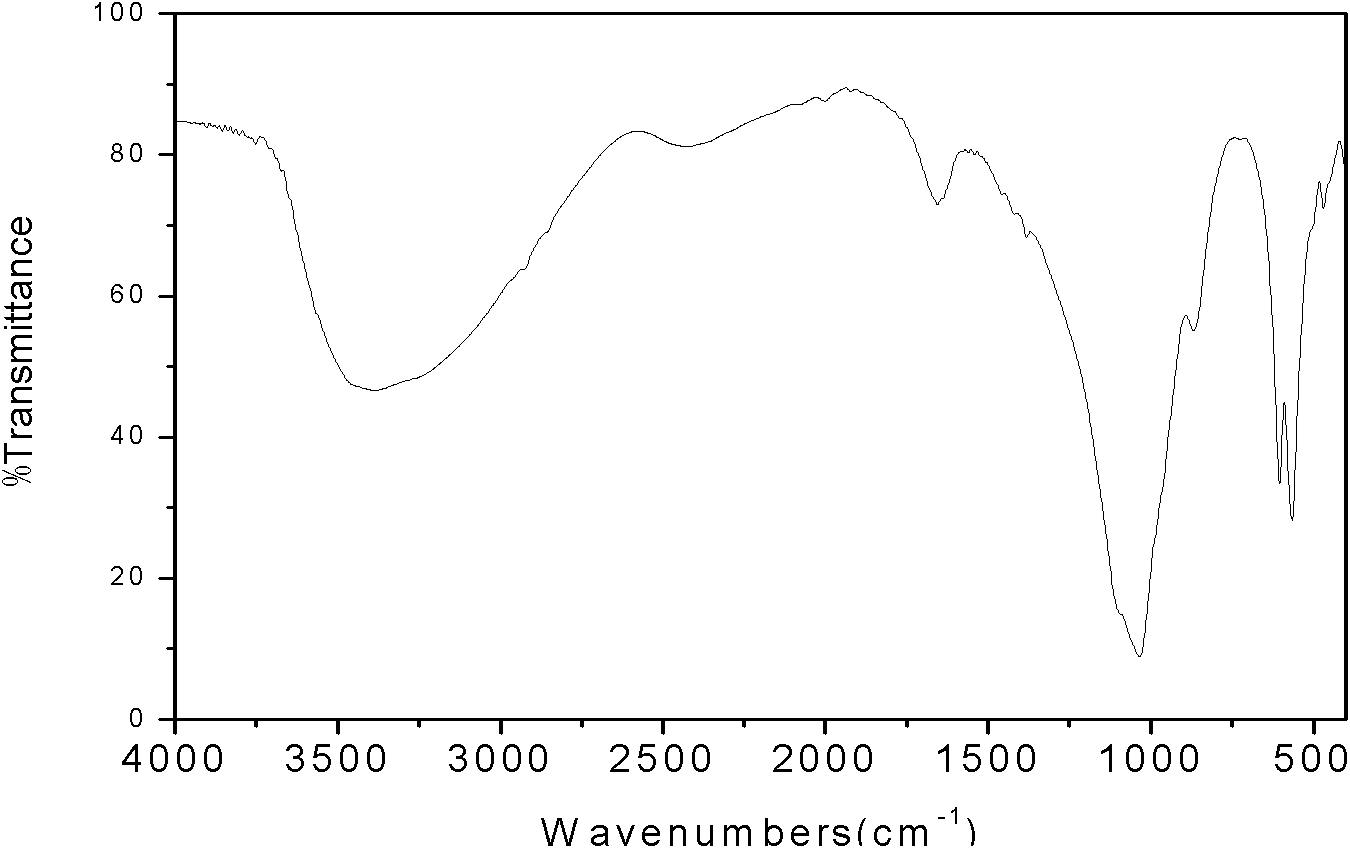Composition for treating dental caries and method for preparing fluorapatite by using same
A composition and caries technology, applied in the field of biological materials for dental restoration, can solve problems such as fracture and fall off of fillings, and achieve the effect of high chemical stability
- Summary
- Abstract
- Description
- Claims
- Application Information
AI Technical Summary
Problems solved by technology
Method used
Image
Examples
example 1
[0028] Mix 1.33 grams of tetracalcium phosphate and 0.16 grams of ammonium fluoride evenly, then add 0.196 grams of phosphoric acid and 4 mL of water to the mixture, and mix them evenly in the mixing pan with a key to form a cement slurry, and place it at 37 ° C, 100 % humidity environment for 3 days, the obtained material was characterized by XRD, IR and EDS for its chemical structure and composition, the results are as follows Figure 1-Figure 3 shown. It can be seen from the XRD pattern that the prepared product has its characteristic peaks around 2θ=26°, 2θ=32°, 2θ=34°, 2θ=40°, 2θ=47°, and 2θ=50°. The results show that the synthesized product is fluorapatite. It can be seen from the IR spectrum: at 1070cm -1 and 950cm -1 PO 4 3- the absorption peak. at 1432 and 1750.8cm -1 Two absorption peaks at and from 2800cm -1 to 3472cm -1 The absorption peaks between them are the hydroxyl absorption peaks of water. The vibration peak of the P-O-H bond of apatite is at 877.7...
example 2
[0030] Mix 2.66g of tetracalcium phosphate and 0.16g of ammonium fluoride evenly, then add 0.196g of phosphoric acid and 4mL of water into the mixture, and mix evenly in the mixing pan with a key to form a cement paste, which is filled into carious tooth enamel At the defect, the tooth was placed in an environment of 37° C. and 100% humidity for 3 days to obtain an experimental sample. Use SEM to characterize the microstructure of the material surface, such as Figure 4shown. From the SEM photo, it can be seen that fluoroapatite and enamel form a tight bond, and there is no obvious gap on the interface, which can also indicate that the restorative material fluoroapatite and enamel have similar components, making them easy to bond together. Synthetic fluoroapatite is needle-like crystals that are tightly bound together. Cut the material together with the tooth from the center of the material to observe the interface between the material and the surface of the enamel defect, ...
example 3
[0032] Mix 13.3 grams of tetracalcium phosphate and 1.6 grams of ammonium fluoride evenly, then add 1.96 grams of phosphoric acid and 6 mL of water to the mixture, mix evenly in the mixing pan with a key, and mix it into a cement slurry with the key, and fill it into the caries For the enamel defect, place the tooth in an environment of 35-38° C. and 100% humidity for 3 days to obtain fluorapatite.
PUM
 Login to View More
Login to View More Abstract
Description
Claims
Application Information
 Login to View More
Login to View More - R&D
- Intellectual Property
- Life Sciences
- Materials
- Tech Scout
- Unparalleled Data Quality
- Higher Quality Content
- 60% Fewer Hallucinations
Browse by: Latest US Patents, China's latest patents, Technical Efficacy Thesaurus, Application Domain, Technology Topic, Popular Technical Reports.
© 2025 PatSnap. All rights reserved.Legal|Privacy policy|Modern Slavery Act Transparency Statement|Sitemap|About US| Contact US: help@patsnap.com



